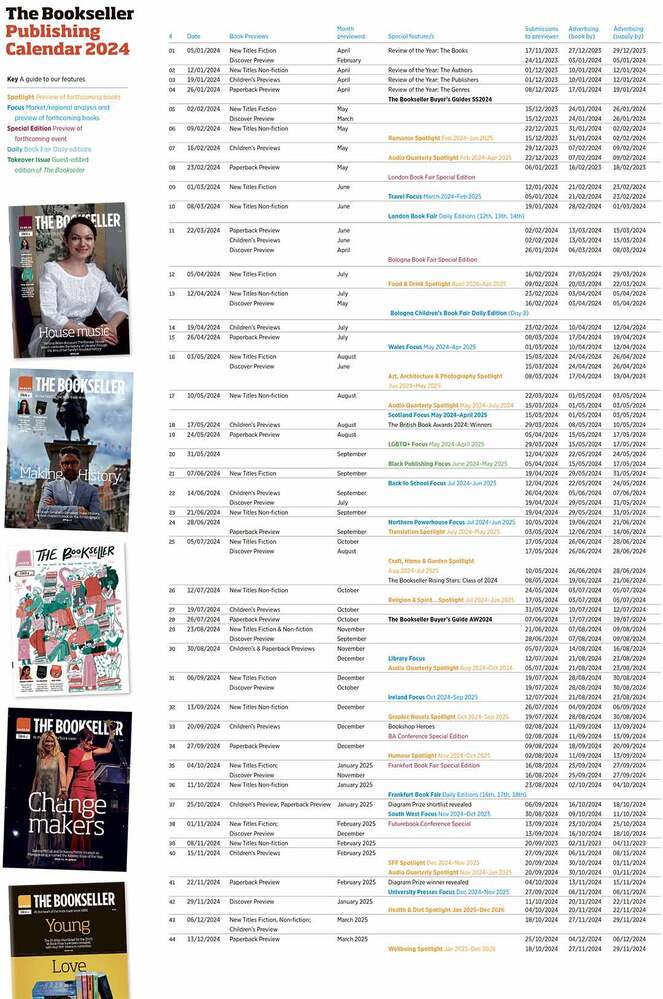You are viewing your 1 free article this month. Login to read more articles.
Hachette UK unveils high-tech Hely Hutchinson distribution centre
After four years of planning and construction, Hachette’s huge new distribution centre—the most expensive capital project in the firm’s history—was officially opened this week.
Built next to the hulking Didcot power station and on the remains of three of its demolished chimneys, Hachette Livre has spent "many tens of millions" on the Hely Hutchinson centre. In fact, all the numbers thrown around by Hachette UK c.o.o. Chris Emerson about the project are huge. The facility has 150,000 titles in stock and, when up to full speed, will dispatch 65 million books a year, shipping to more than 100 countries. There are ambitions for it to eventually distribute half of all books published in the UK, through third-party deals such as those already in place with firms such as Quarto and Thames & Hudson.
Inside the warehouse, shelves of binder packs reach 20 metres high, while 118 robotic red "shuttles" are sent whizzing around boxes of loose books, picking them out and sending them to workers via a series of conveyor belts. This is also just the start. The facility has been built with the future in mind, and has the room to double its capacity in the coming years. "We could have made it a million square foot," Emerson said. "This is 250,000 sq ft and much more space efficient.Once our clients are in, we can double the capacity of this building without moving a wall," he added. "We’ve built this for the long term."
The challenge to build the huge new facility came from a changing marketplace, with the rise of e-books, lower volumes bringing down revenues, and the complexity of orders driving up costs. "Retailers want stock little and often, so their requirements have become more complex, they want just-in-time delivery of stock," Emerson explained. "Our warehouse systems had been largely unchanged for 20 years. But we designed a warehouse that will stand 15 or 20 years from now."
 What was previously "miles and miles of library shelves" has been replaced by a towering but streamlined system. Jo Westbrook (pictured right), c.o.o. for Hachette UK Distribution, explained: "Now the product comes to the pickers. People are always picking. They’re 100% productive." Littlehampton Book Services (LBS), which Westbrook
What was previously "miles and miles of library shelves" has been replaced by a towering but streamlined system. Jo Westbrook (pictured right), c.o.o. for Hachette UK Distribution, explained: "Now the product comes to the pickers. People are always picking. They’re 100% productive." Littlehampton Book Services (LBS), which Westbrook
managed, has now closed down, with Bookpoint’s operation fully moving over to the new site early next year. The workforce will be around 350 people, cut down from the 450 previously employed across the previous sites, although Emerson said later expansion would mean that it could eventually create jobs. It is overseen by Matt Wright, c.e.o. of Hachette Distribution, who has dubbed it “the most sophisticated book distribution warehouse in Europe—possibly even in the world".
A matter of time
Start-up for the huge project—which the publisher has not revealed the full cost of—began in 2015, with design, building and testing of the warehouse, automation and IT beginning the following year. The first clients, from LBS, were in last year, culminating in this week’s grand opening. Emerson said: "It’s on time and on budget. For something this big, that’s something we’re very proud of. Inevitably, there have been some bumps in the road but we’ve not had any catastrophes."
Hachette claims to have planned it with "military precision", with each transition involving a year of preparation and dedicated project streams. Key customers such as Amazon, Waterstones and the Booksellers Association Council have been engaged during the whole process.
"One or two publishers have outsourced to the likes of DHL, and it hasn’t worked very well because it’s bespoke and fiddly by nature," said Emerson. "There are more stories of failure than success in organising these sorts of things. With hundreds of thousands of products in hundreds of countries, there’s an awful lot to go wrong. Other people are certainly looking at doing something like this. But anybody that does it now is five years away from implementing it."
To avoid pitfalls that have dogged similar projects in the past, the team took their time. Two years were spent crunching data through different models, and no IT system was bought in until all the business processes had been designed. The team itself was carefully assembled and outside help was brought in where necessary. For Emerson and Westbrook, it was also vital to be honest about any problem areas so that they could be nipped in the bud.
It was also the gradual additions of publishers and titles which was key to a smooth start. Octopus books were the first in, with Little, Brown joining just before Christmas and third party titles following. The first day on site saw 3,000 books processed. By the end of the year, that was up to 165,000. Imprints distributed at Bookpoint, Headline, Quercus, John Murray and Hachette Children’s, will transfer to the centre in the coming months.
Westbrook said: "One of the biggest things we were allowed to do was the slow ramp up. There’s only so far we can go with dummy data. With Little, Brown, we put them live three months before Christmas, so that gave them a good workout. We had lots of very late nights and weekend working but the team came through it incredibly well."

Game changing
Part of the project has involved ditching the Vista system used as a standard in the industry for two new systems. "Game-changing" programme SAP captures orders from retailers and customers, enabling publishers to access data in real time. Meanwhile, the new JDA system manages stock in the warehouse and connects with the distributor’s partners. "For the publishers their interface changed as well," explained Westbrook. "Vista felt like an old pair of slippers. Now we’ve changed to an intuitive system where publishing staff can see the real-time data. You can see spikes in sales after a publicity campaign."
It’s a fast system, with Hachette aiming to pack and ship orders in 24 hours—quicker if there is an urgent order. The computer system tells workers the number of books needing to be picked, their dimensions and weight get checked automatically, and a series of machines take care of much of the rest of the process, from shrink-wrapping, adding a packing list, and cutting the box to the right size. After that, they head off on a conveyor to the delivery bays, divided up according to retailer.
Hachette says retailers benefit from more accurate documentation, faster booking in, reduced damage and the ability to ship an order within one hour of receipt if urgent.
Emerson said: "I think this project, for us, brings distribution closer together with publishing. We’ve had more than 100 publishers through the warehouse, 50 authors and agents. It’s brought the creative and the distribution side of the process together.
He added: "This warehouse and project would stand the test of a comparison with anything in the UK and European market. This shows publishing is very entrepreneurial. It is not the quiet and stuffy book world people outside the industry might think it is."















